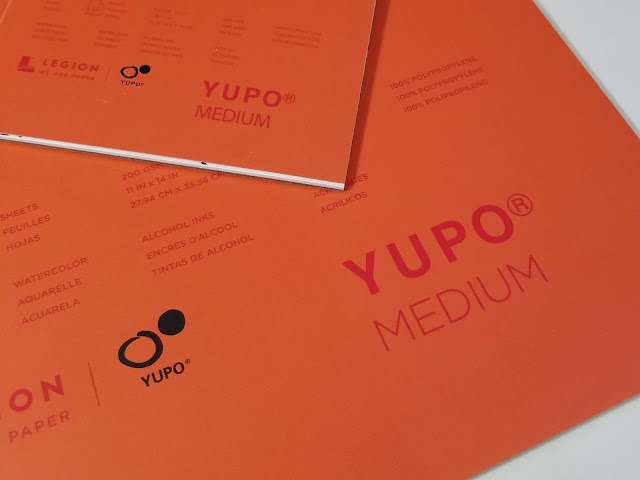 Are you up for a challenge?
Are you up for a challenge?
Watercolor is an adventure all on its own but if you are up for more challenge, you might give Yupo a try. I am here to give you some pointers that will improve your experience. Though it may seem foreign and scary at first, after a few painting sessions, you might just fall in love with this unique surface. Shake up your creative process and take a break from the usual watercolor techniques. While you may wonder whether you will ever get the gist, be willing to explore the possibilities. Do you remember sitting in a classroom as a child, looking wistfully out the window, waiting in eager expectation for time on the playground? Time. Time to do as you wished without the rigid instructions and limitations.
Sometimes, I need more play with watercolor.
What is Yupo?
You might be asking me, "what exactly is Yupo?" That's a good place to begin. Yupo is a synthetic paper that is tree-free. This surface is 100% recyclable, smooth, very durable, tear-resistant, waterproof. It resists buckling that usually occurs with cotton watercolor papers. It does not absorb the pigment. There is no need to tape Yupo on a board. Pigments remain vibrant and white of the surface is easily restored. Most often, artists use alcohol inks on Yupo but other mediums can be used as well. There are two different weights of Yupo offered: 74 lb and 144 lb. For the purpose of watercolor painting, 74 lb. is more than sufficient. There's also a translucent Yupo but I have not explored watercolor options there yet. Yupo's available where art supplies are offered.
Here, I show you two sizes of Yupo 5" x 7" and 11" x 14" with 10 sheets per pad.The smaller pad was $4.93 and the larger pad was $16.82. They were purchased from Dick Blick. The 20 sheet pad (74 lb.) of Yupo costs $16.99 on Cheap Joe's Art Stuff presently.
Here, I show you two sizes of Yupo 5" x 7" and 11" x 14" with 10 sheets per pad.The smaller pad was $4.93 and the larger pad was $16.82. They were purchased from Dick Blick. The 20 sheet pad (74 lb.) of Yupo costs $16.99 on Cheap Joe's Art Stuff presently.
What I understand about Yupo so far...
In a previous post (January 2016) , I shared my first experience with Yupo. I will link the post titled Watercolor Adventure with Yupo here. I had fun playing with Yupo and still do. At that time, I needed more time painting on this new surface. The hours spent gave me a better comfort level and results. My favorite subjects are landscapes and flowers. I wanted to challenge myself to be less detailed and tight with my technique. At first, I felt like I would never have the knack for anything representative of these subjects. I will admit it's a long stretch to find how to bring watercolor to Yupo in a way that connects with my style. Each time that I returned to "play" on Yupo with my watercolors, I was more pleased. The artwork is now something I enjoy looking at and displaying for others to see.
 |
| My first major session of experimenting with Yupo back in 2016. |
So, let's move on to my tips for watercolor success on Yupo.
Starting with the basics:
1. Yupo is made from polypropylene. It's not a paper at all.
2. It's an alternative surface for painting and ink.
3. It does not absorb color at all. Watercolor paint can be lifted off to bring back whites.
4. Prep the surface using a cotton ball and rubbing alcohol. This removes oils left by fingerprints.
5. Draw with water-soluble pencils. Look for water-soluble graphite pencils. Draw with watercolor
pencils instead of graphite. Do not erase. Eraser marks act as a resist.
pencils instead of graphite. Do not erase. Eraser marks act as a resist.
6. Paint once to add color; paint twice and it will lift color.
7. More watery color mixes will take longer to dry.
8. When complete, the painting needs to be sealed with a Krylon matte sealer.
Those are the basic guidelines I understood when I first began experimenting back in 2016. I had been aware of Yupo for quite a few years but had avoided it. I feel better knowing many watercolor artists are still avoiding it like I did. Still, it's worth the risk and you might find it's your new love.
Those are the basic guidelines I understood when I first began experimenting back in 2016. I had been aware of Yupo for quite a few years but had avoided it. I feel better knowing many watercolor artists are still avoiding it like I did. Still, it's worth the risk and you might find it's your new love.


